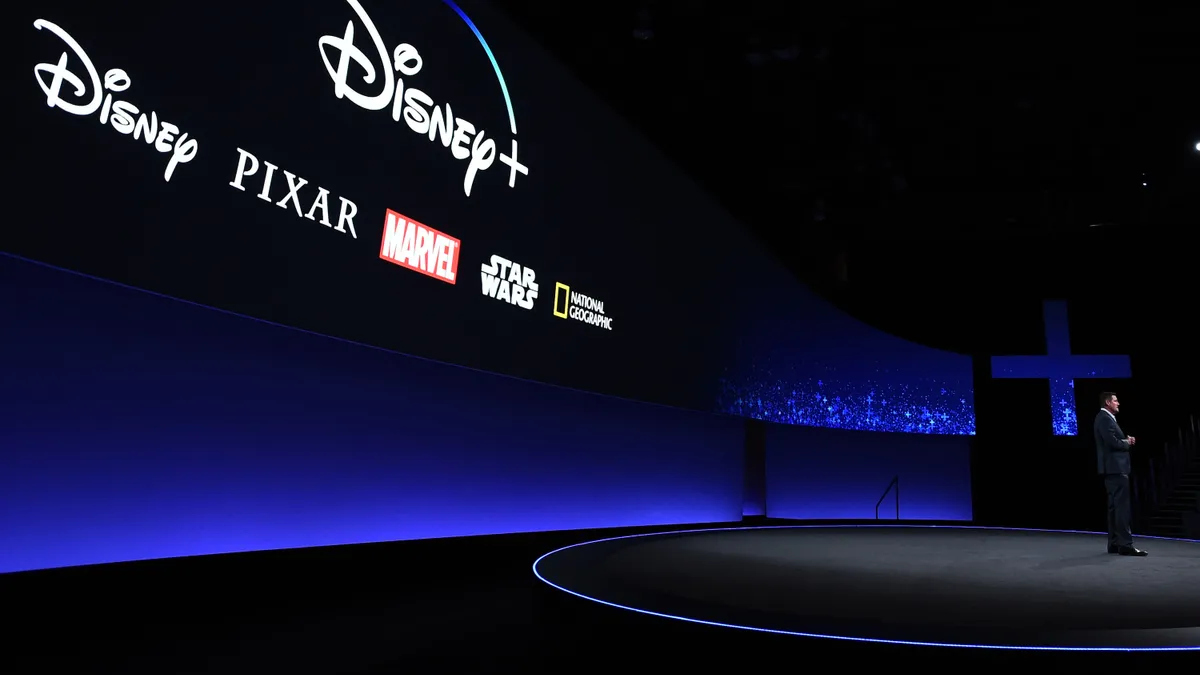Dive Brief:
- Disney is introducing an ad-supported version of Disney+ in the U.S. on Dec. 8 as part of a larger adjustment to its streaming pricing strategy, according to a press release. Plans for such an offering were previously announced, but these are the most concrete details to date.
- The new “basic” tier carrying ads costs $7.99 per month versus the ad-free “premium” version, which is increasing to $10.99 per month. Ad-free Disney+ currently costs $7.99 per month, making the change a noteworthy price hike.
- The news dropped around Disney’s earnings report for the third fiscal quarter. Revenue was up 26% year-on-year to $21.5 billion, beating analyst expectations. But streaming growth categorically is cooling, with Disney cutting its long-term subscriber forecast.
Dive Insight:
Like other companies with a major stake in streaming, Disney is making some tweaks to its strategy as subscriber growth gets harder to come by. Monetization through advertising is becoming a more substantial piece of the playbook and aligns with how rivals are steeling themselves in a tightly competitive market. Disney’s direct-to-consumer segment, which includes streaming, posted a $1.06 billion loss for the quarter.
Interestingly, the ad-supported tier for Disney+, which was first announced in March, doesn’t actually represent a cheaper option for consumers, who are grappling with inflation. The plan costs as much as Disney+ does today, while that premium version is receiving a hike that puts it more in line with other ad-free streamers.
“There will be zero cost savings for Disney Plus’s ad-supported tier, and it’ll actually cost $3 more to continue with an ad-free experience,” said Mike Proulx, research director at Forrester, in emailed comments. “This is a questionable marketing choice during a time when consumers are feeling an extra financial pinch that might only get worse come 2023.”
Disney previously promised a light ad load of about four minutes of commercials per hour for ad-supported Disney+. Ad frequency and volume are long-standing problems for connected TV viewers and the company is likely trying to avoid frustrating newcomers who have no shortage of alternatives to turn to for entertainment. The tier also won’t run any ads around programming aimed at preschool children, sidestepping potential privacy pitfalls.
Despite some limitations, brands are still likely amped about the idea of being able to message in front of content tied to blockbuster franchises and studios like Marvel, Star Wars and Pixar. Marketers generally have been excited by the prospect of more ads entering the once-stingy streaming category. Netflix, which long resisted the idea, aims to roll out a cheaper, ad-supported plan early next year with help from Microsoft.
Disney+ added 14.4 million subscribers in the third fiscal quarter, 8 million of which came from its Hotstar brand in India. Those figures speak to how a significant portion of Disney+’s momentum is coming from markets outside the U.S. Disney, across properties that also include ESPN+ and Hulu, now commands 221.1 streaming subscribers globally, putting it ahead of Netflix. But, as Variety noted, it makes less revenue per subscriber.















